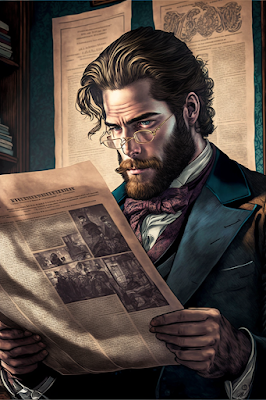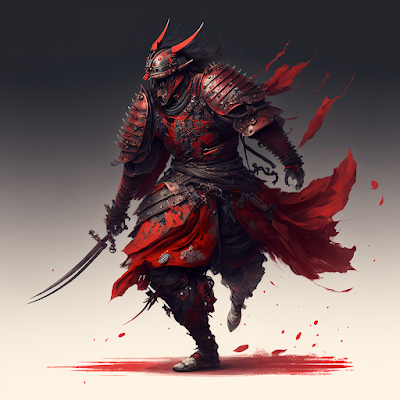The samurai code, also known as Bushido, was a moral code that governed the behavior of Japan's samurai class from the medieval period to the Meiji era (1185-1868). It emphasized loyalty, honor, and personal sacrifice in the service of one's lord or master. The code was based on Confucianism, Buddhism, and Shintoism and evolved over time to become a complex set of moral and ethical guidelines that were deeply ingrained in samurai culture.
Key components of the samurai code included:
Loyalty: A samurai was expected to be fiercely loyal to their lord and to their family, and to be willing to lay down their life in their service.
Courage: Courage was considered the most important virtue of a samurai, and they were expected to be fearless in battle.
Honor: A samurai's reputation was everything, and they were expected to maintain a strict code of behavior that upheld their family's honor and the honor of the samurai class.
Discipline: A samurai was expected to be disciplined and to control their emotions and desires.
Respect: A samurai was expected to show respect to their elders and superiors and to treat others with kindness and compassion.
The samurai code was an important part of Japanese culture for centuries, and its influence can still be felt in modern Japan today. The concept of loyalty, honor, and personal sacrifice continues to be a central theme in Japanese society, and the samurai code remains a source of pride and inspiration for many Japanese people.
DaVinci Resolve is a professional-level video editing and color correction software developed by Blackmagic Design. It is used for post-production work in the film and television industry, as well as for professional video editing and color grading in other fields.The software features a wide range of tools for editing and refining video, including cut, trim, and splice tools, as well as audio editing capabilities. In addition, DaVinci Resolve is known for its powerful color correction and grading tools, which allow users to adjust the color and tone of their video footage to achieve a specific look or mood.
The software is available in several versions, including a free version (DaVinci Resolve Lite) and a paid version (DaVinci Resolve Studio), which includes additional features and tools. The software is widely used by professionals in the film and television industry, and has been used on numerous feature films, television shows, and commercial projects.
 |
| A victorian Gent reading |
Have a look at this! I've been tinkering with creating a video comic that is tictok friendly! Tell me what you think!
Graphic novels are books that use sequential art and text to tell a story. They are a hybrid of comic books and traditional novels, and often use the visual language of comics to convey both narrative and emotional elements. Graphic novels can cover a wide range of genres, including fiction, non-fiction, historical fiction, fantasy, science fiction, and more. They can be aimed at children, young adults, or adults, and can tackle complex themes and subject matter.
Graphic novels are often published in bound volumes and are distinct from comic books, which are typically serialized and released on a monthly or bi-monthly basis. Graphic novels allow for longer, more in-depth storytelling and are often considered a legitimate form of literary expression. They have gained widespread recognition and popularity in recent years, and many graphic novels have been adapted into movies, television shows, and video games. My very favourite graphic novel, and also my favourite big-screen movie adaptation of a comic, is Watchmen.
"Watchmen" is a graphic novel written by Alan Moore and illustrated by Dave Gibbons. It was first published in 1986 and is widely considered one of the greatest graphic novels of all time. The story takes place in an alternate history version of the United States, where masked vigilantes were once used to fight crime, but have since been outlawed. The plot revolves around a group of retired superheroes who are brought back into action when one of their own is murdered.
"Watchmen" is known for its dark, complex narrative and mature themes, which address political, social, and philosophical issues such as the morality of power, the nature of justice, and the impact of vigilantism. The art style and use of visual elements, such as the iconic "clock" symbol, also add to the book's impact.
The graphic novel has had a significant impact on popular culture and is often cited as a major influence on the superhero genre. It has been adapted into a film, a video game, and a television series, and has inspired countless other works in comics, movies, and television. Overall, "Watchmen" is a seminal work that continues to be widely read and celebrated for its innovative storytelling, mature themes, and iconic art.
 |
| Bayberry Books logo, with Headphones and a wreath of bayberries and leaves |
Why have I chosen the name Bayberry? Well, to be honest, it was the name of my local pub!! I spent some time trying to concoct a clever name, and in the end I tied myself in knots.
Bayberries were historically used to make bayberry candles, as the wax from the berries is fragrant and burns cleanly.
Bayberry bushes are a popular choice for landscaping, as they are tough, low-maintenance plants that can tolerate salt spray and grow in a variety of soils. They can grow up to 15 feet tall and produce fragrant, greenish-yellow flowers in the spring. The leaves are glossy and dark green, and the plant provides year-round interest with its showy fruit and attractive bark.
Bayberries are also valuable to wildlife, providing food and shelter for a variety of species including birds, small mammals, and insects. Bayberries are a good choice for gardeners who want to create a wildlife-friendly habitat in their yard.
What's not to like about an origami Samurai? Beautiful and complex, I love this image
Origami is the traditional Japanese art of paper folding. The goal of origami is to transform a flat sheet of paper into a finished sculpture through folding and sculpting techniques, without cutting, gluing, taping or marking the paper. Origami has a rich history and is a popular hobby around the world. It can range from simple models such as cranes, boats and flowers to complex designs that can be quite intricate and beautiful. Origami has also inspired many modern forms of paper art and engineering, including the design of deployable structures for space exploration and medical devices.
I'm experimenting with combining zombies and samurai warriors. I'm using an AI art generator, called MidJourney. AI art refers to artwork created by algorithms and artificial intelligence systems, either through direct manipulation by a human or through autonomous processes. This can include everything from generative visuals and music to AI-generated paintings and sculptures. AI art is often created using machine learning algorithms and neural networks that are trained on existing art and design data, allowing them to create new works based on that training. The results can range from stylistically similar to human-created art to completely unique and unprecedented forms of expression.
Midjourney is an AI art project that utilizes machine learning algorithms to generate abstract images. The project is created by a team of artists and programmers who use a variety of techniques, such as neural networks and generative algorithms, to produce the artworks. These images are said to be inspired by natural phenomena such as landscapes, clouds and oceans, and can be seen as a visual representation of the workings of the mind. The art produced by the project is meant to be contemplative and thought-provoking, encouraging the viewer to consider the relationship between technology and nature.
The everyday Samurai is a series of images featuring a samurai warrior going about his life in the modern world. It's just for amusement!
let's learn a bit about the Samurai warrior of old first though, back in the feudal days of Japan. Samurai warriors were a social class in feudal Japan, serving as military nobility and the personal retainers of the country's rulers. They were trained in martial arts and were expected to follow a strict code of ethics known as bushido. Their duties included:
Protecting their lords and serving as their personal guards.
Maintaining order in their local areas, serving as law enforcement.
Participating in military campaigns and battles.
Representing their lords in negotiations and other diplomatic affairs.
Maintaining a sense of discipline and moral behavior to uphold the honor of their lord and themselves.
In addition to their military duties, samurai were also expected to be cultured and well-educated, with a strong emphasis placed on literary and artistic pursuits.
This is my latest experiment, creating a video-graphic novel.... it's been a fun experiment, I've been using a variety of tools. I created the images based from photographs and images that I fed into an AI tool. The editing was done in Davinci Resolve, and the audio effects were taken from my library.
Graphic novels have their roots in several historical and cultural traditions, including comic strips, illustrated books, and manga. The term "graphic novel" was first used in 1964 to describe Will Eisner's "A Contract with God," which is widely considered to be the first true graphic novel.
Graphic novels typically use sequential art and text to tell a story in a book-length format. They often blend elements of literature, comics, and illustration to create a unique form of visual storytelling.
The form gained widespread popularity in the 1980s and 1990s, with seminal works such as Art Spiegelman's "Maus," Alan Moore and Dave Gibbons' "Watchmen," and Frank Miller's "The Dark Knight Returns." Since then, graphic novels have become a mainstream medium for storytelling, covering a wide range of genres and subjects, from memoirs and fiction to historical events and social issues.










